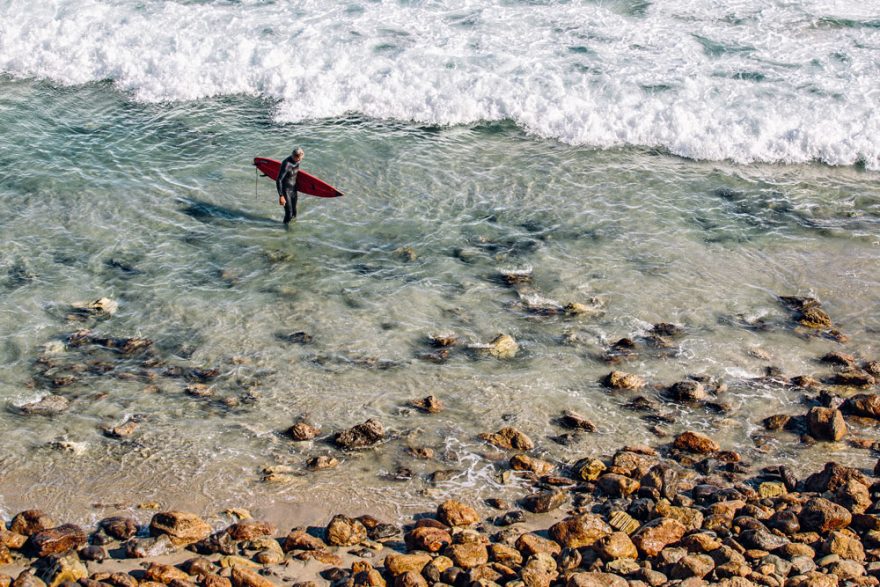
Surfing is a great experience, and we don’t blame you for wanting to give it a try. Who knows, it may even be your calling, and in a few years time, you’ll be winning surfing competitions all over the globe. But, let’s not get ahead of ourselves just yet, to become a pro surfer, you can’t simply buy a board and hit the waves.
A lot of preparation, understanding and skill are needed to become an epic surfer, but if you’re willing to put in the effort, then definitely give it a try. Before you go ahead and order a ton of gear or book airplane tickets for a surfing adventure, here are a few tips that will help you to become a pro surfer in no time.
Are You Ready To Become A Pro?

To become an expert surfer, you will need to dedicate a great deal of time and effort into the sport. Be prepared to spend hours in the water, whether that’s with a professional guiding you through or practicing alone. Carefully consider your reasons for wanting to learn to surf and whether or not you have the time, and patience, to perfect your skills.
Here are a few things you should consider:
- Surfing can be a dangerous sport, make sure that you know how to stay safe while out on the waves.
- If you’re taking lessons, you won’t be going straight out into the big waves. You’ll start off in smaller ripples, and this isn’t something to be embarrassed about. We all have to start somewhere, right?
- When you’re first starting out, choose a beginner’s surfboard. They’re specifically designed to help newbies.
- When you’re out on the waves, always remember that there’s a surfer’s code. These rules must be abided.
- Surfer-related diseases are a thing – learn how to protect yourself.
Finally – when you go surfing, you aren’t always guaranteed a water temperature that’s bearable. If you step into the cold water and your body isn’t used to it, it’s not going to like it. A cold water shock also has the potential to cause a heart attack due to vasoconstriction (your heart must work harder suddenly to pump your blood around the body). You will need to be fully prepared before you head into the waters.
Buying Surfing Gear

When you’re a beginner to surfing, before you buy your gear, it’s better to borrow or rent. See if a friend will lend you some of the gear, or if there’s somewhere that you can hire the gear. You don’t want to invest loads of money into this new hobby and realize that it’s not the sport for you. Borrow gear until you’ve had enough experiences to see whether you truly want to become a surfing pro.
If becoming the next top surfer is your ultimate goal, then here are some of the top rules for buying surfing gear as a beginner:
The Right Wetsuit
If you’re 100% sure that you want to take up surfing, you’re going to need a wetsuit. But, not just any wetsuit; it needs to be the right one. Surfing gear can cost you a lot of money, so you need to make sure that you’re not blowing your budget. Wetsuits range in price, and so does their quality.
In most cases, the higher the price, the better the quality, but if you’re on a budget, this view isn’t always appealing. Look at the sales for wetsuits that originally had a higher mark. You could also chat with any local surfers and ask them for recommendations.
Giant Surfboards
When you’re a beginner, you may think a smaller board will be your best option, but in fact, the bigger the board, the better your experience. The minimum size of board that you should buy is 8’, however, preferably, you should aim to get one that’s over 9’6”.
You should also seek to purchase a foam board as these make it easier for you to catch a wave. If you fall off and get hit by the board, it also hurt you as much as what a non-foam board would.
Know The Waves

To most people, waves just look like waves. However, a true surfer can distinguish between the many different types. If you want to become a pro in this sport, you need to know your waves:
- Point Breaks – When there’s a piece of land that sticks out from above the shore, a point break can get made. The wave wraps itself around this land, and if it’s in the right direction, a surfer can ride a super long wave. There have even been some point breaks that break for almost an entire mile!
- Beach Breaks – For a beach break to get made, the waves must break over sandbars. Depending on the quality of the sandbars, the standard of the break will vary. This type of wave is a perfect choice for beginners due to the soft sandy bottom.
- Reef Breaks – A reef break is a wave that breaks over rock shelves or coral reefs. Many surfers enjoy this type of wave as they’re often predictable and consistent.
Do you still want to become a pro surfer? With a little patience and a lot of practice, you can achieve anything.
 Your Privacy Choices
Your Privacy Choices
 The
The